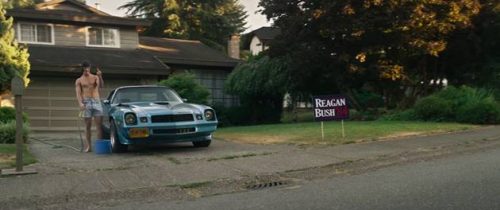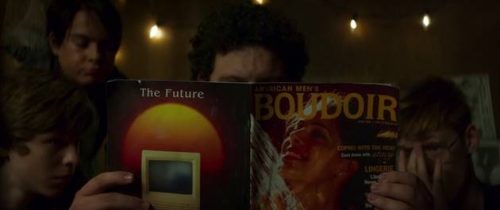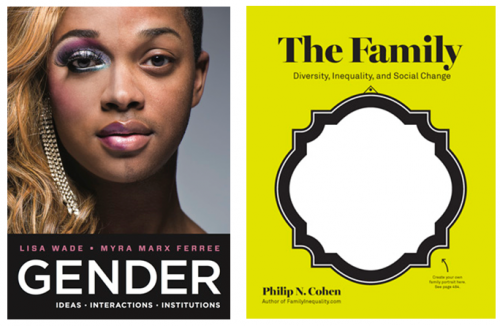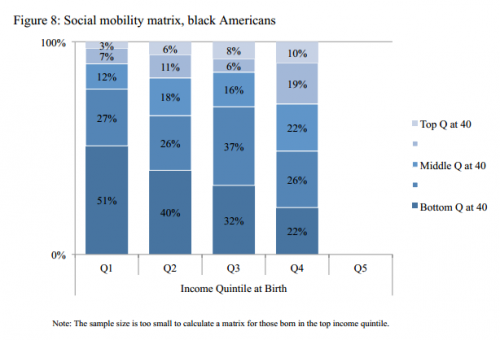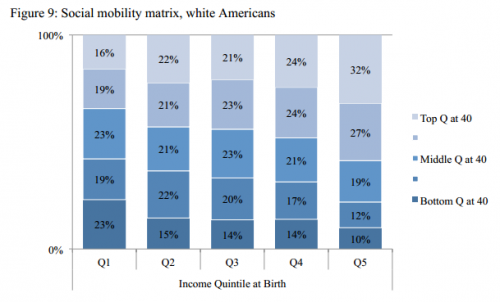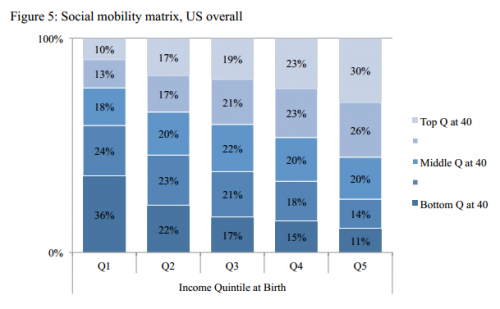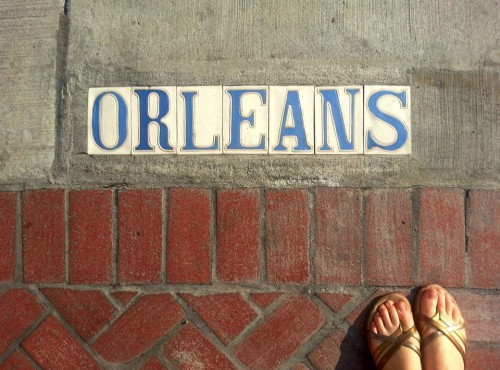I love this 1981 Lego ad, sent in by Nora R. (found at Flikr):
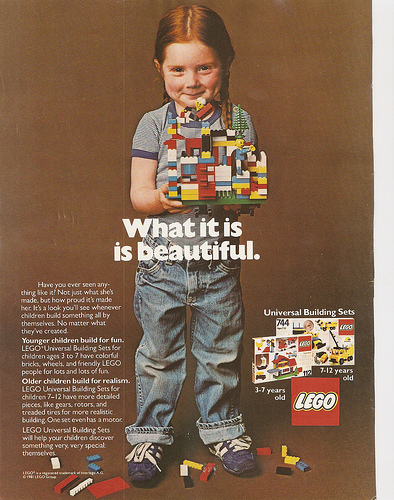
This is what I looked like as a kid. Except that I have naturally curly hair that my mom couldn’t control, so add a halo of frizz sticking out everywhere. And it’s been a while since I’ve seen an ad that shows a girl like this–wearing clothes and playing with a toy that aren’t meant to be specifically “feminine” in our current version of that. She’s playing with regular Legos–not some special version for girls that makes a shopping mall or purse or tube of lipstick! And she’s beautiful!
I’ve seen other ads from the ’70s and ’80s, particularly for Tonka trucks, that show girls like this–in clothes that look like they’re actually made for playing instead of making a fashion statement, and playing with toys in the same way boys would, even if it means getting dirty (gasp!). When we see ads that always show girls in pink, playing with “girl” versions of toys, or engaged in passive activities, that’s a particular marketing choice, not some inevitable, obvious way girls need to be depicted to sell products.
[Note: In the comments, we’re getting a lot of love for the Legos. That’s fine and all, but I must speak up for Lincoln Logs, which were way more awesome if you wanted to build corrals to hold your Breyer horses.]
[Note 2: Holy crap! Someone remade the “Thriller” video with Lego people! I have to admit, Legos probably work better for this purpose than Lincoln Logs would.]
NEW! Nov ’09 I found three more examples of ads that seem devoid of gender differentiation (here, here, and here):




